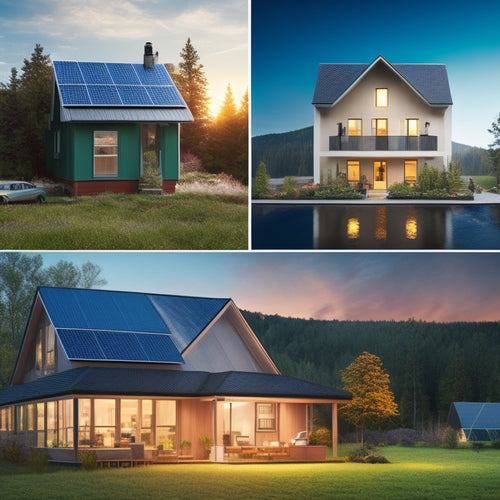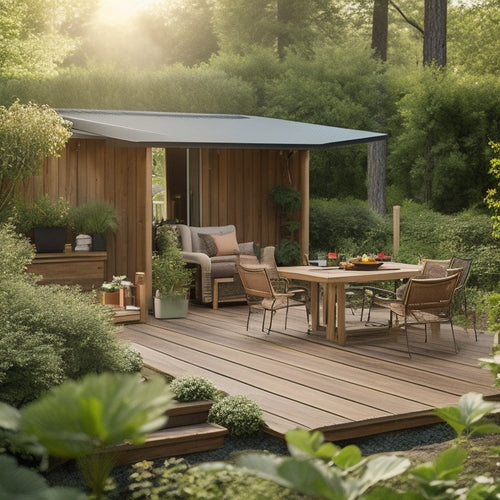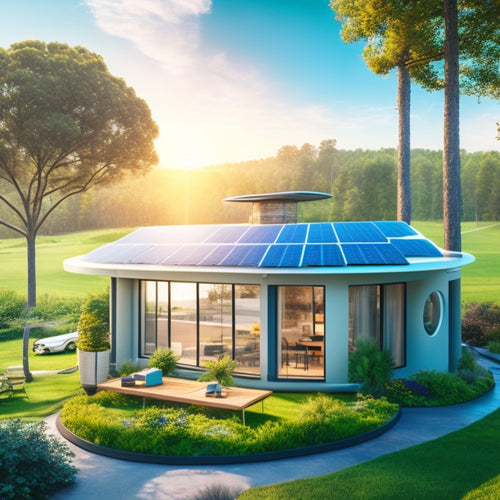Commercial Solar Panel System Installation Costs Revealed
Share
When you're considering a commercial solar panel system installation, you'll want to factor in the varying costs. Rooftop installations depend on roof type, installation crew experience, and roof size. Ground-mounted systems are impacted by racking system quality, land acquisition, and permitting fees. Carport solar arrays average between $3.00 and $4.00 per watt, while canopy installations depend on size, complexity, and materials. Don't forget to optimize your solar panel tilt and angle for maximum energy production. As you navigate these cost factors, you'll discover that understanding the nuances of each will be key to a successful and cost-effective installation - and that's just the beginning.
Key Takeaways
• Commercial solar panel installation costs vary based on roof type, size, and complexity, as well as installation crew experience.
• Ground-mounted systems cost between $2.50 and $3.50 per watt, depending on racking system, land acquisition, and permitting fees.
• Carport solar arrays, ideal for businesses with large parking lots, cost between $3.00 and $4.00 per watt and provide shaded parking.
• Canopy installation costs break down into structural, electrical, and labor components, with total costs varying depending on size and materials used.
• Optimal solar panel tilt and angle are crucial for energy production, with deviations from ideal configuration impacting system performance.
Rooftop Installation Cost Factors
When contemplating a commercial solar panel system installation, the rooftop installation cost factors that influence the overall expense include the size and complexity of the roof. These variables affect the installation time, labor costs, and required materials.
You'll want to take into account the type of roof material, as some materials may require specialized installation equipment or techniques, increasing costs. The installation crew's experience with similar roofs will also impact the installation time and labor costs. For instance, a crew experienced with metal roofs may work more efficiently than one without experience.
Additionally, the roof's size and complexity will influence the amount of materials needed, such as mounting hardware and wiring. By understanding these factors, you can better plan and budget for your commercial solar panel system installation.
Ground-Mounted System Expenses
As you consider alternative installation methods, ground-mounted systems offer a viable option, with expenses influenced by the type and quality of the racking system, foundation requirements, and electrical infrastructure.
You'll need to factor in land acquisition costs, which can vary greatly depending on the location and size of the land. Permitting fees will also add to the overall expense, as you'll need to obtain necessary permits and approvals from local authorities.
Additionally, the type of foundation required, such as a concrete foundation or a ballasted system, will impact the cost. On average, ground-mounted systems can cost between $2.50 and $3.50 per watt, with larger systems typically resulting in lower costs per watt.
Carport Solar Array Pricing
By incorporating carport solar arrays into your commercial solar panel system, you can maximize your land usage and generate clean energy while providing shaded parking for customers or employees, all at a cost that averages between $3.00 and $4.00 per watt.
This setup is ideal for businesses with large parking lots, as it provides dual functionality. You'll not only reduce your reliance on fossil fuels but also create a comfortable environment for patrons or staff.
Plus, with the increasing adoption of electric vehicles, carport solar arrays can be designed to accommodate EV charging stations, further enhancing their appeal.
With a carport solar array, you'll be providing a valuable amenity while reducing your carbon footprint.
Canopy Installation Cost Breakdown
You'll need to take into account several factors when planning a canopy installation, including the size and complexity of the project, local labor costs, and the type of materials used, which can drive costs up to $4.50 per watt. A thorough structural analysis is essential to make sure the canopy can support the weight of the solar panels, and electrical engineering expertise is necessary to design a safe and efficient electrical system.
| Component | Cost Range (per watt) |
| Structural Components | $1.50 - $2.50 |
| Electrical Components | $0.50 - $1.50 |
| Installation Labor | $1.00 - $2.00 |
| Permits and Inspections | $0.25 - $0.50 |
| Engineering and Design | $0.25 - $0.50 |
Keep in mind that these costs can vary depending on your specific project requirements and location.
Solar Panel Tilt and Angle
When positioning your solar panels, it's important to maximize their tilt and angle to enhance energy production, as even slight deviations from the ideal configuration can greatly impact system performance.
The best orientation for your solar panels depends on your location and the time of year. In the northern hemisphere, a tilt angle between 30° and 40° is generally recommended. However, you may need to make seasonal adjustments to optimize energy production throughout the year.
For example, you can tilt your panels at a steeper angle during winter months to capture more sunlight. By adjusting the tilt and angle of your solar panels, you can ensure efficient energy production and maximize your return on investment.
Additional System Component Costs
In addition to optimizing your solar panel's tilt and angle, you'll need to take into account the costs of additional system components that guarantee your commercial solar panel system operates efficiently and effectively.
Here are some key components to take into account:
-
Inverter upgrades: Upgrading your inverter can improve the efficiency of your system, allowing you to generate more power and reduce energy losses.
-
Energy monitoring: Implementing an energy monitoring system enables you to track your energy production and consumption in real-time, identifying areas for optimization.
-
Mounting and tracking systems: These components ensure your panels are securely fastened and angled for maximum energy absorption.
- Electrical balance of system (BOS) components: These components, including wiring, connectors, and circuit breakers, ensure the safe and efficient transmission of power.
Frequently Asked Questions
How Long Does a Typical Solar Panel System Last?
You can expect a typical solar panel system to last around 25-30 years, with some lasting up to 40 years, thanks to system durability and warranty coverage that guarantees performance for 25 years or more.
Can I Install Solar Panels on a Metal Roof?
'Ha! You think installing solar panels on a metal roof is a walk in the park? Think again! You'll need to guarantee metal compatibility and minimize roof penetrations to avoid leaks and structural damage - it's not a DIY project, folks!'
Are There Any Local Incentives for Solar Panel Installation?
You'll want to explore local incentives, such as state rebates and utility discounts, which can greatly reduce your solar panel installation costs; research and claim these benefits to maximize your investment.
How Often Should I Clean My Solar Panels?
As you bask in the glow of your newly installed solar panels, remember that dust accumulation is a silent thief, stealing your system's efficiency. You should clean your panels every 6-12 months for best panel maintenance and maximum energy output.
Can I Add More Panels to My Existing System Later?
You can easily expand your existing system with additional panels later, thanks to system upgrades and expansion options that allow for seamless integration, providing you with flexibility and control over your renewable energy output.
Related Posts
-

What Does Your Home Energy Audit Report Reveal?
Your home energy audit report reveals a detailed analysis of your energy consumption patterns, highlighting areas of ...
-

Green Deck Options: Earth-Conscious Choices for Your Home
You're looking for a deck that not only enhances your home's exterior but also aligns with your eco-friendly values. ...
-

Gamify Your Home's Energy Generation and Savings
You're taking the next step in optimizing your home's energy generation and savings by utilizing the power of gamific...


